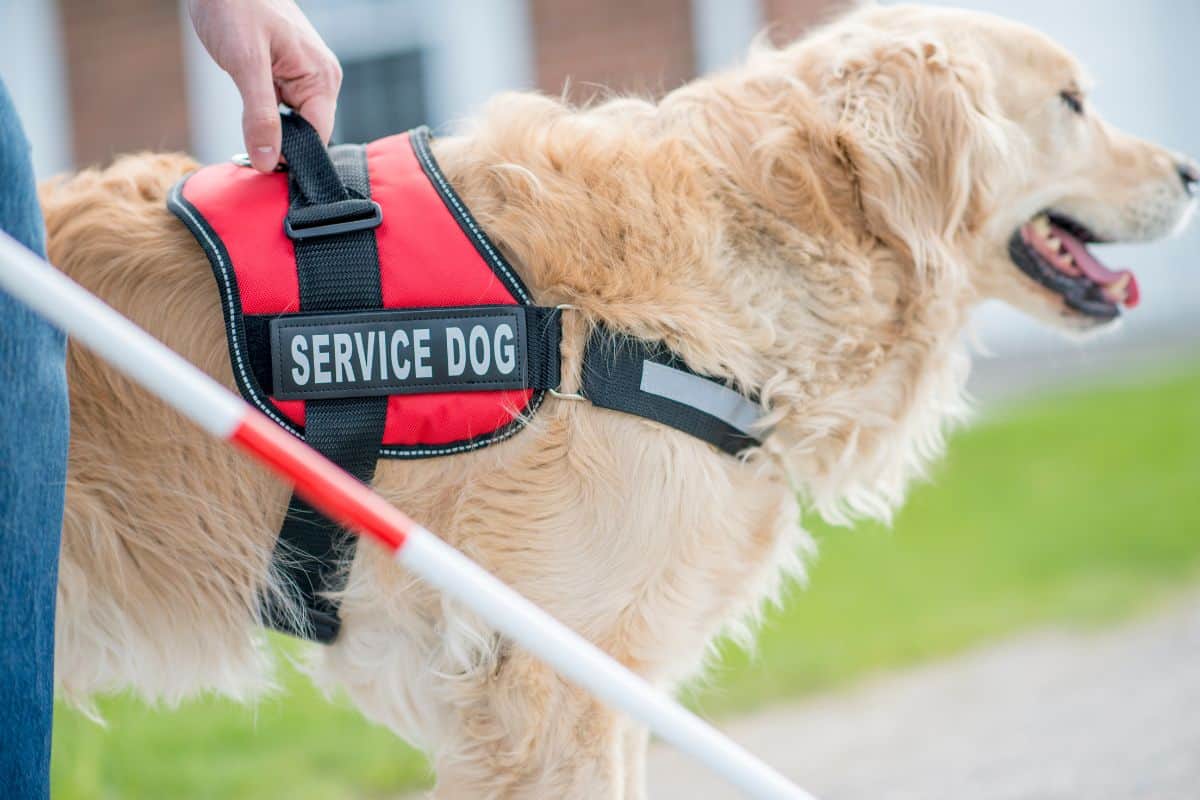Service Dog Certification: Addressing the Myths and Realities

Service dogs are remarkable companions, offering crucial assistance to individuals with disabilities. While their importance is undeniable, there's a prevailing lack of clarity around the certification process in the United States. Join us as we delve into the world of service dog certification and explore why it's not the definitive measure of their authenticity.
Definition of a Service Dog
According to the Americans with Disabilities Act (ADA), a service dog is defined as a canine specifically trained to perform tasks for individuals with disabilities. These tasks can include guiding the visually impaired, alerting to seizures, or even providing emotional support. What's key here is that these tasks are directly related to the handler's disability. While the ADA defines what a service dog is, it doesn't specify the need for certification.
Certification Is Not a Legal Requirement
Here's a revelation: Service dog certification is not a legal requirement in the United States. The ADA sets the standards for these invaluable companions, and it's all about the dog's ability to perform tasks, not a piece of paper. So, whether you're dealing with a certified service dog or not, if the dog performs the tasks, they are entitled to the same rights and access as any other service dog.
Certification is often provided by private organizations and is not required by the ADA, while registration may be done through a few online databases, but also isn't mandatory. Both can be misleading indicators of a service dog's legitimacy.
No, service dogs cannot be denied access if they meet the ADA's definition of a service dog, regardless of whether they are certified or not.
Service Dog Registration and Vests
The term "service dog registration" can often be misleading. The ADA does not mandate any registration process for service dogs. What you may come across is a dog owner registering their service dog with a private organization, not unlike the "certification" mentioned earlier. Additionally, the use of service dog vests can add to the confusion.
Service dog vests can be useful in indicating that a dog is a service dog, but they are also not legally required by the ADA. A service dog can perform their duties without wearing one.
Online service dog certifications may not be legitimate, as they often lack the rigorous training and assessment that a true service dog requires.
No vest hold more weight than another. The only way to determine the legitimacy of a service dog is in their behavior and training proficiency. Many vests will include logos from the organization that trained the dog and can give some insight into the standards required to train the dog.
Service Dog Training
Service dog training is a critical factor in determining a service dog's effectiveness. Rigorous training is not only beneficial but essential for both the dog's abilities and the safety and comfort of the handler. The ADA doesn't specify the training methods or duration, but it does emphasize that the dog must be under the handler's control at all times and should be potty-trained.
Service dog training often involves:
- Basic Obedience: Sit, stay, and come commands are essential for service dogs.
- Task-Specific Training: Service dogs are trained to perform tasks related to the handler's disability.
- Socialization: Service dogs need to be comfortable in various environments and around people and other animals.
- Public Access Training: This involves training the dog to behave appropriately in public places.
The process to train a service dog varies depending on the training organization but typically involves intensive training, assessment, and proof of the handler's disability.
Becoming a Service Dog Trainer
For those interested in becoming service dog trainers, there are several paths to consider. The Academy of Pet Careers is an excellent resource for individuals looking to enter this field. They offer dog training courses that cover the principles of dog training, service dog training, and the ADA guidelines.
To become a service dog trainer, you may consider the following steps:
- Education: Obtain proper education in animal behavior and dog training. This can be through formal courses or self-study.
- Apprenticeship: Work as an apprentice under an experienced service dog trainer.
- Certification: While not legally required, having a certification can increase your credibility.
- Licensing: Depending on your location, you may need to obtain a business license to operate as a service dog trainer.
- Continuing Education: Stay updated with the latest training methods and ADA guidelines.
While it's not legally required, having a certification from a school can be beneficial for service dog trainers to gain credibility and improve their skills.
In conclusion, the world of service dog certification is a complex one. It's essential to remember that the ADA defines a service dog by its abilities, not its certification. While certification can offer certain advantages, it is not a legal requirement and does not guarantee the legitimacy of a service dog.
To better understand and navigate the world of service dogs and service dog certification, individuals and handlers can seek resources like The Academy of Pet Careers, which provides comprehensive guidance on the training and care of service dogs, along with adhering to ADA guidelines. Understanding the laws and the proper training required for service dogs is key to ensuring the rights and well-being of individuals with disabilities.
 Author - Joseph Schifano
Author - Joseph Schifano
Joseph Schifano is the owner and President of The Academy of Pet Careers. With over 20 years of experience working in the pet field, managing large scale pet care businesses, he has experience in every facet of the industry. Joseph's focus is primarily on the business of pet care but his passion is in understanding animal behavior how a dog's brain works so we can improve the care we provide as pet professionals. He is a huge advocate for Pet Empowerment and Force Free training methods. Read more in Joseph's full bio.
